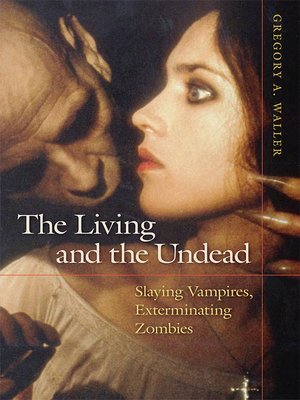
Sign up to save your library
With an OverDrive account, you can save your favorite libraries for at-a-glance information about availability. Find out more about OverDrive accounts.
Find this title in Libby, the library reading app by OverDrive.



Search for a digital library with this title
Title found at these libraries:
| Library Name | Distance |
|---|---|
| Loading... |
Examining a broad range of novels, stories, plays, films, and made-for-television movies, Waller focuses upon a series of interrelated texts: Bram Stoker's Dracula (1897); several film adaptations of Stoker's novel; F. W. Murnau's Nosferatu, A Symphony of Horror (1922); Richard Matheson's I Am Legend (1954); Stephen King's 'Salem's Lot (1975); Werner Herzog's Nosferatu the Vampyre (1979); and George Romero's Night of the Living Dead (1968) and Dawn of the Dead (1979). All of these works, Waller argues, speak to our understanding and fear of evil and chaos, of desire and egotism, of slavish dependence and masterful control. This paperback edition of The Living and the Undead features a new preface in which Waller positions his analysis in relation to the explosion of vampire and zombie films, fiction, and criticism in the past twenty-five years.
|PREFACE viACKNOWLEDGMENTS xiii
INTRODUCTION 1. Stories of the Living and the Undead 3 PART ONE: The Moral Community and the King-Vampire 2. Into the Twentieth Century 29 PART TWO: Dracula Retold 3. Dracula: The Vampire Play (1927), Dracula (1931), and Dracula (1979) 77
4. Horror of Dracula, Hammer's Dracula Films, El Conde Dracula 113
5. Dracula (1973) and Count Dracula (1977) 146 PART THREE: The Sacrifice of the Pure-Hearted Seer 6. Nosferatu, A symphony of Horror and Nosferatu the Vampyre 177 PART FOUR: Legions of the Undead 7. The Invasion of America 233
8. Land of the Living Dead 272 CONCLUSION 9. Resolution, Violence, Survival 331 APPENDIX: Precis of Dracula: The Vampire Play 361
INDEX 363| "Fascinating studies of nineteenth- and especially twentieth-century horror narratives. . . . A book which frequently displays great subtlety and insight."—Library Journal
"Highly recommended as a source book for those interested in the horror genre. In addition, Waller's book provides a critical abundance of empirical data for any scholar concerned with genre studies, history, adaptation, narrativity, and intertextuality."—Wide Angle
"A fascinating account of the changing trends in vampire fiction. . . . People truly interested in horror literature and films will find Waller's book invaluable."—West Coast Review of Books
|Gregory A. Waller is professor and chair of the Department of Communication and Culture at Indiana University, Bloomington. His books include Main Street Amusements: Movies and Commercial Entertainment in a Southern City, 1896-1930.







